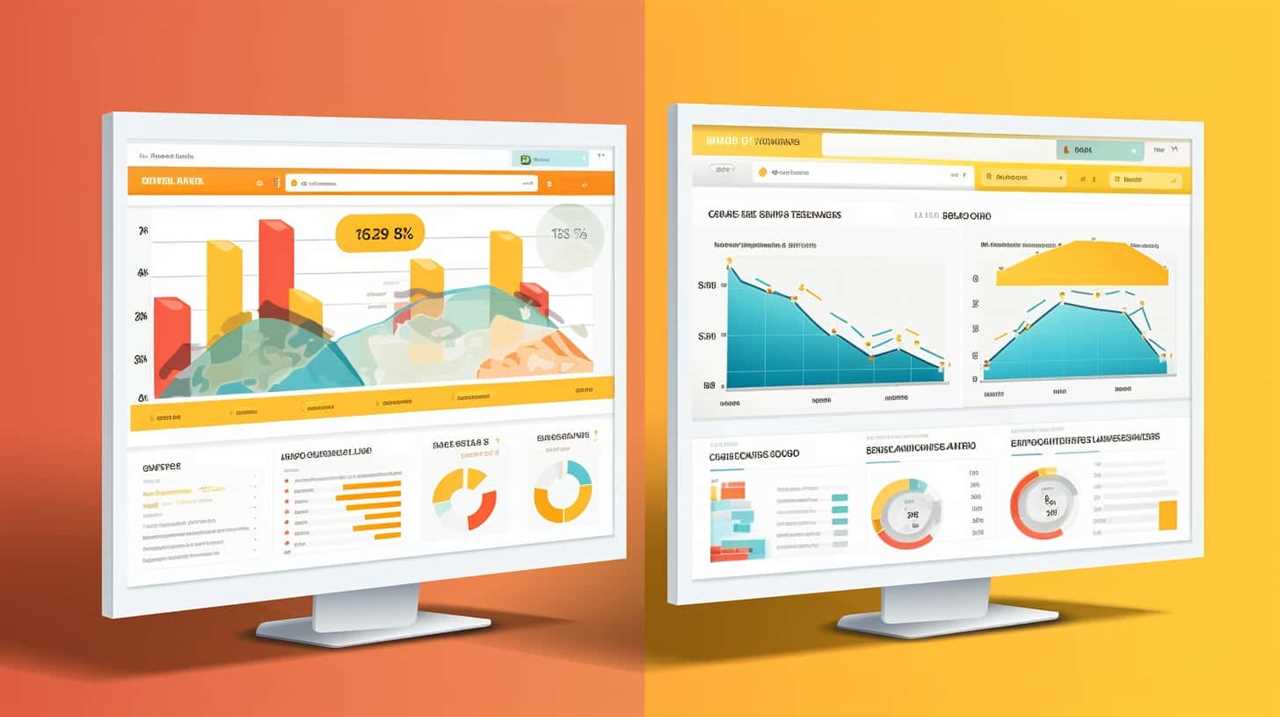Keyword Research
Boost Your Online Presence: Content with Holistic SEO for Topical Authority

Welcome to our manual on enhancing your online visibility through implementing a strategic SEO methodology to establish expertise in your area of interest. In today’s digital environment, it’s essential to optimize your content meticulously to attain a top spot in search engine rankings and establish your brand as a reliable leader in your industry. By adopting a holistic SEO strategy, you can achieve these objectives and more.
In this comprehensive guide, we’ll take you through the steps to create a solid foundation for your content strategy, including conducting keyword research, optimizing on-page SEO, crafting high-quality content, and building high-quality backlinks. We’ll also explore how to enhance user experience, leverage social media, stay updated with SEO trends and incorporate visual content into your strategy. Finally, we’ll provide tips on optimizing for voice search, maximizing local SEO, measuring success, and adapting strategies.
Key Takeaways
- By leveraging content with holistic SEO for topical authority, you can boost your brand’s online presence and establish credibility in your industry.
- Holistic SEO involves a comprehensive approach that goes beyond traditional on-page and off-page optimization techniques.
- Conducting thorough keyword research is the foundation of any successful content strategy.
- Optimizing on-page SEO and crafting high-quality content are crucial for achieving topical authority.
- Building high-quality backlinks, leveraging social media, and enhancing user experience are essential for establishing online authority.
- Staying updated with SEO trends, incorporating visual content, optimizing for voice search, and maximizing local SEO can drive targeted traffic and improve overall search engine visibility.
- Success measurement and strategy adaptation are crucial for maintaining and enhancing topical authority.
Understanding Holistic SEO
At our company, we believe that a holistic SEO strategy is crucial for enhancing your online presence. It’s not just about optimizing your content for search engines; it’s about considering all aspects of your website and user experience to create a comprehensive approach that aligns with SEO best practices.
With a holistic SEO strategy, you can improve the overall user experience, including website structure, navigation, and usability, thereby increasing search engine visibility. By focusing on all aspects of SEO best practices, you can create a solid foundation for your content strategy.
The Components of a Holistic SEO Strategy
A holistic SEO strategy includes:
| Component | Description |
|---|---|
| Technical SEO | Optimizing website structure, speed, and mobile-friendliness for better search engine crawling and indexing. |
| On-page SEO | Optimizing HTML tags, headings, and content structure to improve search engine visibility and user experience. |
| Off-page SEO | Building high-quality backlinks from reputable websites to establish your brand’s authority online. |
| Content optimization | Creating high-quality, engaging content that aligns with user intent and search engine algorithms. |
| User experience | Enhancing website usability, navigation, and design for better user engagement and satisfaction. |
By addressing each component of a holistic SEO strategy, you can ensure that your content is optimized for topical authority and better search engine rankings.
Our team of experts is well-versed in holistic SEO strategies and can help you develop and implement a comprehensive approach that boosts your online presence. Stay tuned for the next section, where we will delve into the crucial step of conducting keyword research.
Conducting Keyword Research
Keyword research is the foundation of any successful content strategy. By identifying the right keywords that align with your target audience’s search intent, you can optimize your content to rank higher in search engine results. Here are some steps to conduct thorough keyword research:
- Understand your target audience: Consider their interests, behaviors, and pain points. This will help you identify search terms they are likely to use.
- Brainstorm seed keywords: Come up with a list of relevant topics and keywords related to your industry, products, or services.
- Expand your list with keyword tools: Use keyword research tools like Google Keyword Planner, SEMrush, or Ahrefs to generate a more extensive list of keywords and their search volume.
- Analyze competition: Look at the keywords your competitors are ranking for and consider incorporating them into your list if they align with your content strategy.
- Select the most relevant keywords: Choose keywords with high search volume and low competition that align with your content and target audience.
Once you have your list of keywords, it’s time to optimize your content. Here are some tips for content optimization:
- Use keywords in your content: Incorporate relevant keywords naturally throughout your content, including in headings, subheadings, and meta descriptions.
- Don’t overuse keywords: Avoid keyword stuffing, which can hurt your search engine rankings and make your content less readable.
- Optimize meta tags: Use relevant keywords in your title tag and meta description to improve your click-through rate in search results.
- Create high-quality content: Focus on creating informative, engaging content that aligns with your target audience’s search intent.
- Consider long-tail keywords: Long-tail keywords are more specific and can help you rank for niche topics.
Incorporating relevant keywords into your content is essential for optimizing your website for search engines. By conducting thorough keyword research and implementing content optimization strategies, you can improve your search engine visibility and drive targeted traffic to your website.
Optimizing On-Page SEO
On-page SEO refers to optimizing various elements on your website to improve search engine visibility. By optimizing your on-page SEO, you can ensure that search engines can effectively understand and index your web pages. This section will provide you with actionable tips on optimizing your content for on-page SEO to enhance your topical authority.
Meta Tags
Meta tags are snippets of text that describe a page’s content. These tags don’t appear on the page but are included in the HTML code. They are crucial for improving your website’s search engine ranking and click-through rates. Ensure that your meta title and description accurately reflect the page’s content and include relevant keywords. Avoid using duplicate meta tags across multiple pages on your website.
Content Structure
Organizing your content using headings and subheadings can enhance the overall user experience and improve search engine visibility. Use H1 tags for your page’s main heading and H2 tags for subheadings. Ensure that your content is logically structured, easy to read, and provides value to your target audience.
Keyword Density
Keyword density refers to the number of times a keyword or phrase appears on your web page. While it’s essential to include relevant keywords in your content, avoid stuffing your pages with too many keywords, as this can negatively impact your search engine rankings. Use keywords naturally and in context, ensuring that they enhance the overall user experience and provide relevant information to your target audience.
Internal Linking
Internal linking refers to linking to other pages on your website. This practice can improve website navigation, enhance the user experience, and increase the time visitors spend on your website. Ensure that your internal links are relevant, properly structured, and include relevant anchor text.
“On-page SEO is essential for creating a solid foundation for your content strategy and improving your website’s search engine visibility.” – Our SEO Experts
By optimizing your on-page SEO, you can ensure that search engines can effectively understand and index your web pages. Use the tips outlined in this section to enhance your on-page SEO and improve your topical authority.
Crafting High-Quality Content
When it comes to content creation, quality is everything. Not only does high-quality content help establish your brand as an expert in your field, but it can also significantly impact your search engine rankings. However, crafting engaging and informative content that aligns with both search engine algorithms and your target audience’s needs can be challenging. That’s why we’ve put together some tips for optimizing your content to enhance both user experience and content optimization.
1. Know Your Audience
The first step in creating high-quality content is understanding your target audience’s needs and preferences. By conducting thorough research and analyzing your audience’s demographics and search behaviors, you can tailor your content to meet their specific needs. This can include using language that resonates with your audience, addressing pain points, and providing solutions to their problems.
2. Use Eye-Catching Graphics

Visuals are an effective way to break up text and make your content more engaging. Incorporating eye-catching graphics, such as images, videos, and infographics, not only makes your content more visually appealing, but it can also improve user experience and increase shares on social media platforms.
3. Incorporate Relevant Keywords
Keyword research is critical for optimizing your content for search engines. By incorporating relevant keywords into your content, you can increase your chances of ranking higher in search engine results and attracting targeted traffic to your website. However, it’s essential to use keywords naturally and not overstuff your content, as this can negatively impact user experience and search engine rankings.
4. Write Compelling Headlines
Your headlines are the first thing readers see, and they can significantly impact whether they choose to read your content or not. Writing compelling headlines that accurately reflect your content while also piquing your target audience’s interests can increase click-through rates and improve engagement.
5. Create Easy-to-Read Content with Clear Structure
No one wants to read dense, difficult-to-understand content. Creating easy-to-read content with clear structure, including headings, bullet points, and short paragraphs, makes your content more digestible and improves user experience. Additionally, using appropriate formatting, such as bold text and italics, can draw attention to key points and increase engagement.
By implementing these tips to optimize your content for user experience and content optimization, you can enhance your brand’s visibility and establish yourself as an authoritative source in your industry.
Enhancing User Experience
Improving user experience is a crucial aspect of content optimization, ensuring that your website visitors have a positive experience and can easily navigate your website. Here are some strategies we recommend to enhance user experience:
- Optimize website speed: a website that loads quickly can reduce bounce rates and improve user engagement.
- Ensure mobile-friendliness: with the increase in mobile use, having a responsive website design is essential to improve user experience on mobile devices.
- Make navigation intuitive: well-labeled menus and easy-to-find search bars make it easier for users to find what they’re looking for on your website.
- Use visuals and multimedia: incorporating images, videos, and infographics can enhance engagement and improve user experience.
Example of a Table
| Website Speed | Mobile-Friendliness | Intuitive Navigation | Visuals and Multimedia |
|---|---|---|---|
| Optimize images and videos for web use to reduce load times. | Use responsive web design to ensure a seamless experience on all devices. | Organize content in a logical manner and use descriptive labels. | Incorporate engaging visuals and multimedia to enhance user experience. |
| Use caching and compression techniques to speed up website loading times. | Test website compatibility on different devices and screen sizes. | Ensure consistent navigation across all web pages. | Create interactive multimedia such as quizzes or surveys. |
| Minimize the use of large files or plugins that slow down web pages. | Use legible font sizes and optimize touch elements for mobile devices. | Include a prominent search bar for easy website navigation. | Create concise and informative visual aids. |
By prioritizing user experience, you can improve website engagement and reduce bounce rates, leading to better search engine visibility and improved topical authority.
Building High-Quality Backlinks
Off-page SEO is an indispensable part of any holistic SEO strategy. One of the most effective ways to establish your brand’s topical authority is through building high-quality backlinks from reputable websites.
Backlinks are links from other websites that direct users to your website. They signal to search engines that other websites and users consider your content relevant and valuable, which leads to higher search engine rankings.
Why are backlinks important for off-page SEO?
Backlinks are a crucial off-page ranking factor because they indicate to search engines that other websites find your content trustworthy and authoritative. The quality of backlinks matters more than the quantity, so it’s essential to prioritize building high-quality backlinks from influential websites.
How to build high-quality backlinks?
Building high-quality backlinks requires a strategic approach based on value exchange. Here are some effective strategies:
- Create high-quality, shareable content that other websites would be interested in linking to.
- Guest post on reputable websites in your industry, providing valuable content and linking back to your website.
- Participate in industry-specific forums and communities and leave thoughtful comments linking back to relevant content on your website.
It’s essential to avoid unethical practices such as buying backlinks or using automated link-building tools, as they can lead to penalties or even a complete ban from search engines.
The importance of anchor text
Anchor text is the visible and clickable text in a hyperlink. It’s essential to use relevant and descriptive anchor text that accurately represents the content of the page being linked to. Doing so ensures that search engines understand the context and relevance of the linked content, which can improve search engine rankings.
Tracking and analyzing backlinks
Tracking and analyzing your backlinks is crucial to determine the effectiveness of your link-building strategies and identify areas of improvement. Use tools like Ahrefs or Moz to track your backlinks and analyze their quality, relevance, and anchor text distribution. Regularly evaluating your backlinks can help you adjust your link-building strategies to build even higher-quality backlinks.

Off-page SEO, particularly building high-quality backlinks, is an integral part of any holistic SEO strategy. By prioritizing value exchange and focusing on high-quality over quantity, you can establish your brand’s topical authority and boost your search engine rankings.
Leveraging Social Media
Social media platforms can be valuable assets in enhancing your brand’s online presence and improving your off-page SEO. By leveraging social media effectively, you can amplify your content’s reach, drive traffic to your website, and increase engagement. Here are some practical tips on how to use social media to improve your off-page SEO.
Choose the Right Platforms
With numerous social media platforms available, it’s critical to select the ones that are most relevant to your brand and audience. Focus on platforms where your target audience spends most of their time. For instance, if you are targeting young adults, Instagram and Snapchat may be more suitable than LinkedIn.
Optimize Your Profiles
Once you have selected the appropriate platforms, optimize your profiles to showcase your brand’s personality and value proposition. Use relevant keywords in your bio and descriptions to improve your chances of appearing in search results. Also, ensure that your profile images and cover photos are high-quality and align with your brand’s visual identity.
Share High-Quality Content
To boost engagement, share high-quality content that resonates with your audience. Use a mix of formats, such as images, videos, and infographics, to diversify your content and keep your audience engaged. Make sure to add social sharing buttons to your website and blog to encourage readers to share your content on their social media profiles.
Engage with Your Audience
Engage with your audience by responding to comments, messages, and mentions promptly. Encourage conversations and share user-generated content to build a sense of community around your brand. By interacting with your audience, you can increase your brand’s visibility and trustworthiness, ultimately improving your off-page SEO.
By following these tips, you can leverage social media to improve your off-page SEO and enhance your brand’s online presence. Remember to regularly measure your social media performance using website analytics tools to identify areas of improvement and adjust your strategies accordingly.
Monitoring Performance and Analyzing Data
At every stage of your content creation process, monitoring performance and analyzing data is crucial. Website analytics tools like Google Analytics can provide valuable insights into user behavior, traffic sources, and other metrics that can help you make data-driven decisions to optimize your content for topical authority.
One of the most critical metrics to monitor is your website’s traffic. By analyzing the number of visitors to your site, their behavior, and the sources of their traffic, you can gain a better understanding of how your content is performing and whether your SEO strategy is effective. You can also identify areas for improvement and make informed decisions about how to optimize your content to drive more traffic.
| Metric | Description |
|---|---|
| Pageviews | The number of times your website pages were viewed by visitors. |
| Unique visitors | The number of individual visitors to your site. |
| Time on page | The average amount of time visitors spend on a given page. |
| Bounce rate | The percentage of visitors who leave your site after only viewing one page. |
Another critical metric to monitor is your website’s search engine rankings. By tracking your rankings for specific keywords over time, you can identify which keywords are driving the most traffic to your website and optimize your content accordingly.
Furthermore, analyzing user behavior on your website can provide useful insights into how visitors interact with your content. By reviewing metrics such as time on page, bounce rate, and click-through rate, you can identify which pages or pieces of content are most engaging to your audience and adjust your content strategy accordingly.
In summary, monitoring performance and analyzing data are critical components of any successful SEO strategy. By understanding your website’s traffic patterns and user behavior, you can optimize your content for topical authority and establish your brand as an authoritative source in your industry.

Staying Updated with SEO Trends
Staying at the forefront of SEO best practices is essential to maintain your online visibility and topical authority. Search engine algorithms are continuously evolving, and keeping up with the latest industry updates is crucial to remain competitive.
At our company, we prioritize staying informed about the latest SEO trends to ensure that our content strategy is always up-to-date. Here are some tips that we follow to stay on top of industry updates:
- Attend industry events and conferences – This is a great way to get insights from experts and stay updated on the latest trends in SEO.
- Subscribe to industry publications – There are many reputable online publications that cover SEO news and trends. Staying informed on the latest developments can help you stay ahead of the competition.
- Follow industry thought leaders on social media – Following industry experts on social media platforms like Twitter and LinkedIn can provide valuable insights into the latest SEO trends.
- Regularly review and analyze website analytics – By monitoring website analytics, you can identify trends and areas for improvement in your SEO strategy.
Example of SEO industry insights:
“According to a recent study by Moz, backlinks remain one of the most critical factors in Google’s search algorithm”
By staying informed on the latest SEO trends and adapting your SEO strategies accordingly, you can ensure that your brand remains visible and authoritative in the ever-evolving online landscape.
Incorporating Visual Content
Visual content is a key element in creating engaging and informative content that enhances user experience and improves search engine visibility. Including visual elements such as images, videos, and infographics can help your content stand out and keep your audience engaged. Here are some tips for optimizing and leveraging visual content for better search engine optimization:
Optimizing Images
Optimizing images is crucial for improving website speed and search engine visibility. Here are some best practices for optimizing images:
- Compress images to minimize file size without compromising on quality. This improves website load time.
- Add alt text to images using relevant keywords. This helps search engines understand the context and content of the image.
- Use descriptive and relevant file names for images. This makes it easier for search engines to identify and index the image.
Optimizing images is crucial for better website and search engine performance. With more people relying on visual content for information, it’s important to ensure your images are engaging, informative, and optimized.
Leveraging Videos and Infographics
Videos and infographics are effective visual elements that can communicate complex information in an engaging and easy-to-understand manner. Here are some tips for leveraging videos and infographics:
- Create informative and engaging videos that are relevant to your target audience
- Embed videos on relevant web pages to enhance user experience and increase engagement
- Create visually appealing infographics that communicate complex information in a simple and easy-to-understand manner
- Share infographics on social media platforms to increase your brand’s visibility and drive traffic to your website
By incorporating visual elements into your content strategy, you can enhance user experience, improve search engine visibility, and position your brand as an authoritative source in your industry.
Optimizing for Voice Search
Voice search is becoming increasingly popular, with more people using virtual assistants such as Siri or Amazon Alexa to find information online. As a result, optimizing your content for voice search is essential to maintain your brand’s online visibility.
“Okay Google, how do I optimize my content for voice search?”
Here are some tips to optimize your content for voice search:
- Use conversational language: When people use voice search, they tend to use natural language. Therefore, it’s important to use conversational language in your content, including long-tail keywords and phrases that people usually say in everyday conversation.
- Answer questions: Voice searches are often in the form of questions. Try to anticipate the questions your target audience may ask and include the answers in your content. You can also create a FAQ section to address common questions and improve your chances of appearing in featured snippets.
- Optimize for local search: Many voice searches are location-based. Therefore, optimizing your content for local search is crucial for voice search optimization. This includes using local keywords and incorporating your business name, address, and phone number (NAP) on your website.
- Use Schema Markup: Schema Markup is a code that helps search engines better understand the content of your website. By using Schema Markup to mark up your content, you can improve your chances of appearing in featured snippets and voice search results.
- Focus on page speed: People who use voice search expect quick answers. Therefore, it’s essential to ensure that your website loads fast to provide a smooth user experience.
By following these tips, you can optimize your content for voice search and improve your chances of appearing on the coveted position zero in search engine results pages.
Maximizing Local SEO
For businesses with a physical location or a specific service area, local SEO is an essential component of your content strategy. Local SEO allows you to target potential customers in your area and improve your chances of appearing in local search results.
Here are some ways you can optimize your content for local SEO:
Create Location-Specific Pages
Create individual pages for each of your business locations, if applicable. Include the business name, address, and phone number, also known as NAP information, on each page. Additionally, include information about the services you offer and any promotions or special offers specific to that location. This will help Google understand the relevance of your website to local search queries and improve your chances of appearing in local search results.
Optimize Your Google My Business Profile
Creating and optimizing your Google My Business profile is critical for local SEO. Ensure that your profile is complete and up-to-date, including accurate NAP information, business hours, and photos. Encourage customers to leave reviews on your profile, as this can significantly impact your local search rankings.

Use Local Keywords
Identifying and using local keywords in your content is an effective way to improve your local search rankings. Include location-specific phrases such as city, state, or zip code in your website copy, meta descriptions, and title tags. For example, if you run a flower shop in San Francisco, use the phrase “San Francisco flower shop” throughout your content.
Create Local Content
Creating content that is relevant to your local audience is an excellent way to improve your local search rankings. Consider creating blog posts or other forms of content that focus on local topics or events. For example, if you run a bakery in a particular neighborhood, create content highlighting local events or popular landmarks in the area.
Build Local Links
Earning high-quality backlinks from local websites can also boost your local search rankings. Research local business directories, chambers of commerce, or other relevant websites and reach out to them to earn a link back to your website. Additionally, consider sponsoring local events or participating in other local outreach opportunities to earn links and enhance your local SEO.
By implementing these local SEO strategies, you can improve your chances of appearing in local search results and drive more targeted traffic to your website.
Measuring Success and Adapting Strategies
At this point, you have implemented a comprehensive content strategy with holistic SEO for topical authority. However, to maintain your search engine rankings and improve your online presence, you need to continuously measure the success of your SEO efforts.
One of the easiest and most effective ways to measure SEO success is by using website analytics tools. Google Analytics is a popular tool that provides valuable insights into how visitors interact with your website, including metrics such as traffic sources, bounce rates, and time spent on site. By analyzing this data, you can identify areas of improvement and adapt your strategies accordingly.
Pro Tip: Create custom reports in Google Analytics to track specific SEO-related metrics, such as organic search traffic, keyword rankings, and backlinks.
In addition to utilizing website analytics tools, it’s essential to stay up-to-date with the latest SEO trends and best practices. By keeping a pulse on the industry, you can adapt your SEO strategies and stay ahead of the competition.
Adapting Strategies Based on Results
Based on the data obtained from website analytics, it’s crucial to adapt your SEO strategies to ensure continuous improvement. Here are some tips to help you get started:
| Measure | Action Steps |
|---|---|
| Keyword rankings | Identify keywords that are not performing well and optimize your content accordingly. Consider modifying your content strategy to include new keywords that show potential. |
| Backlinks | Monitor your backlink profile regularly and disavow any low-quality or spammy backlinks. Focus on building high-quality, relevant backlinks from authoritative websites. |
| Bounce rates | Analyze the pages with high bounce rates and improve the content and user experience on those pages. Optimize for on-page factors such as page load speed, readability, and visual appeal. |
| Organic traffic | Adjust your content and SEO strategies to target new keywords and topics that align with your target audience’s search intent. |
By adapting your strategies based on data and industry trends, you can ensure that your content remains optimized for topical authority, strengthens your online presence, and continues to drive targeted traffic to your website.
Remember that SEO is an ongoing process that requires continuous monitoring, testing, and refinement. By taking a data-driven approach and adapting your strategies accordingly, you can achieve and maintain topical authority and stand out in the online landscape.
Conclusion
Incorporating content with holistic SEO for topical authority is a powerful tool to enhance your online presence. By considering all aspects of SEO, from on-page optimization to user experience and link building, you can establish your brand as an authoritative source in your industry and rank higher in search engine results.
Remember to conduct thorough keyword research and create high-quality content that aligns with the needs of your audience. Enhance user experience by considering website structure, speed, and mobile-friendliness. Build high-quality backlinks from reputable websites and leverage social media to amplify your content’s reach.
Utilize website analytics tools to monitor performance and adapt your strategies accordingly. Stay up-to-date with the latest SEO trends and incorporate visual content and voice search optimization into your approach for even greater success. Maximizing local SEO can also drive targeted traffic to your website if your business operates in a specific location.
By continuously evaluating and refining your approach, you can maintain and enhance your topical authority for sustained success in the online landscape. Let’s implement these strategies and boost our online presence together!
FAQ
What is holistic SEO?
Holistic SEO is a comprehensive approach that goes beyond traditional on-page and off-page optimization techniques. It focuses on improving the overall user experience, including website structure, navigation, and usability, to enhance search engine visibility.
Why is keyword research important?
Keyword research is essential for identifying the right keywords that align with your target audience’s search intent. By optimizing your content for relevant keywords, you can improve your chances of ranking higher in search engine results.
How do I optimize on-page SEO?
On-page SEO refers to optimizing elements on your website such as meta tags, headings, and content structure. By optimizing these elements, you can improve search engine visibility and ensure that your web pages are effectively indexed.
Why is high-quality content important for topical authority?
High-quality content not only meets the needs of your target audience but also aligns with search engine algorithms. By creating engaging and informative content, you can position your brand as an expert in your industry and improve your topical authority.
How can I enhance user experience?
Enhancing user experience involves focusing on factors such as website speed, mobile-friendliness, and intuitive navigation. By improving these aspects, you can increase user satisfaction and improve your chances of ranking higher in search engine results.
How do I build high-quality backlinks?
Building high-quality backlinks involves earning links from reputable websites. By implementing effective link building strategies, you can enhance your brand’s authority online and improve your search engine rankings.
How can I leverage social media for SEO?
Social media platforms can be valuable assets in enhancing your brand’s online presence. By using social media effectively, you can amplify your content’s reach, drive traffic to your website, and increase engagement, which in turn can improve your off-page SEO.
How do I monitor performance and analyze data?
Monitoring the performance of your SEO efforts is crucial for identifying areas of improvement. By utilizing website analytics tools and analyzing data, you can make data-driven decisions to optimize your content for topical authority.
Why is it important to stay updated with SEO trends?
SEO is an ever-evolving field, with search engine algorithms continuously changing. Staying updated with the latest SEO trends is essential to maintain your online visibility and topical authority. Adapting your SEO strategies accordingly can help you stay ahead of the competition.
How can incorporating visual content benefit SEO?
Visual content, such as images, videos, and infographics, can enhance user engagement and improve the overall user experience. By optimizing and leveraging visual elements, you can improve your search engine visibility and attract more organic traffic.
How do I optimize for voice search?
With the rise of voice assistants and smart devices, optimizing your content for voice search has become increasingly important. Adapting your content to align with voice search queries can help ensure that your brand remains visible in this evolving search landscape.
How can I maximize local SEO?
If your business operates in a specific location, maximizing local SEO can drive targeted traffic to your website. Optimizing your content for local search queries, including Google My Business optimization and local keyword targeting, can help you improve your local visibility.
How do I measure success and adapt strategies?
Measuring the success of your SEO efforts is crucial for continuous improvement. By utilizing effective success measurement techniques and analyzing data, you can make informed decisions and adapt your strategies to enhance your topical authority.
What is the importance of holistic SEO for boosting online presence?
Holistic SEO is a powerful approach that can boost your brand’s online presence. By implementing strategies that leverage content with holistic SEO for topical authority, you can optimize your content, enhance user experience, and establish your brand as an authoritative source in your industry.
Keyword Research
4 Best Keyword Research Tips for Creative Industries

Having trouble finding the perfect keywords for your art field? Search no more! Our top four tips for conducting keyword research provide all the information you need.
Understanding your target audience is key, so let’s dive in and brainstorm relevant keywords.
Don’t forget to utilize powerful keyword research tools to enhance your strategy.
And finally, analyze and refine your keyword list to ensure optimal results.
Get ready to master the art of keyword research in the creative world!
Key Takeaways
- Understanding the target audience is crucial in keyword research for creative industries.
- Brainstorming relevant keywords can be done through competitor analysis, customer feedback, industry trends, and social media.
- Keyword research tools provide valuable insights and data, helping uncover hidden opportunities and understand customer intent.
- Analyzing and refining the keyword list by incorporating long tail and localized keywords can maximize SEO efforts in creative industries.
Understand Your Target Audience
In this article, we’ll explore the importance of understanding our target audience in conducting effective keyword research for creative industries.
Understanding consumer behavior and identifying market trends are crucial steps in developing a successful keyword strategy. By gaining insights into our target audience, we can tailor our keywords to align with their preferences and needs. This understanding allows us to create content that resonates with our audience and drives relevant traffic to our websites.
By analyzing consumer behavior, such as their search patterns and preferences, we can identify the keywords that are most likely to attract our target audience. Additionally, staying updated on market trends helps us anticipate changes in consumer demand and adjust our keyword strategy accordingly.
Ultimately, understanding our target audience is the foundation of effective keyword research in creative industries.
Brainstorm Relevant Keywords
To effectively brainstorm relevant keywords for creative industries, we need to collaborate and explore various ideas as a team. Keyword expansion techniques and long tail keyword opportunities can help us expand our keyword list and target a wider range of potential customers.
Here are four strategies to consider:
- Conduct competitor analysis: Study the keywords used by your competitors to gain insights and identify new keyword possibilities.
- Use customer feedback: Review customer reviews, comments, and inquiries to uncover keywords that reflect their needs and interests.
- Analyze industry trends: Stay up-to-date with the latest trends in your creative industry and incorporate relevant keywords into your list.
- Leverage social media: Monitor social media conversations related to your industry to discover popular keywords and phrases.
By implementing these strategies, we can generate a comprehensive list of relevant keywords that will enhance our online visibility and attract our target audience.
Now, let’s explore how we can use keyword research tools to refine our keyword selection and maximize our SEO efforts.
Use Keyword Research Tools
Now let’s explore how we can leverage keyword research tools to further enhance our keyword selection and maximize our SEO efforts in the creative industries.
Keyword research tools provide valuable insights and data that can help us identify the most relevant and high-performing keywords for our artistic industries and design businesses. These tools offer features such as keyword suggestions, search volume data, competition analysis, and trend tracking.
By using these tools, we can uncover hidden opportunities, understand customer intent, and optimize our website content accordingly. Additionally, keyword research tools enable us to stay updated with the latest trends and search patterns in our industries, allowing us to adapt our SEO strategies accordingly.
Analyze and Refine Your Keyword List
Now, let’s delve into analyzing and refining our keyword list to ensure that we’re targeting the most effective and relevant keywords for our creative industries.
To optimize our keyword list, we should focus on incorporating long tail keywords. These are specific keyword phrases that are more likely to attract our target audience and have less competition. By including these long tail keywords, we can increase our chances of ranking higher on search engine result pages.
Additionally, it’s crucial to incorporate localized keywords for targeted marketing. This means including keywords that are specific to our target geographic location, helping us reach potential customers in our area.
Frequently Asked Questions
How Can I Effectively Use Social Media to Research Keywords for My Creative Industry?
To effectively use social media for keyword research in our creative industry, we leverage influencer collaborations and utilize user-generated content. These strategies provide valuable insights into the keywords that resonate with our target audience and drive engagement.
Are There Any Specific Techniques or Strategies to Find Long-Tail Keywords in the Creative Industry?
When finding niche keywords, it’s important to consider the value of long-tail keywords in the creative industry. We can employ specific techniques and strategies to uncover these valuable keywords for maximum impact and success.
What Are Some Common Mistakes to Avoid When Conducting Keyword Research for Creative Industries?
When it comes to keyword research for creative industries, avoiding common mistakes is crucial. By understanding how to avoid keyword research pitfalls in the creative industry, we can optimize our strategies and achieve mastery.
How Can I Ensure That My Keyword Research Aligns With Current Trends in the Creative Industry?
To ensure our keyword research aligns with current trends in the creative industry, we emphasize the importance of data analysis and staying ahead of the competition by identifying emerging trends.
Are There Any Alternative Keyword Research Methods That Are Specific to the Creative Industry?
Yes, there are alternative keyword research tools tailored specifically to the unique challenges of the creative industry. These tools can help us uncover trending keywords and optimize our content for maximum visibility.
How Can Holistic SEO Benefit Fashion Designers?
Holistic seo strategies for fashion designers can greatly benefit their online presence and overall brand success. By implementing these strategies, designers can ensure their website is optimized for search engines, driving organic traffic and increasing visibility. From keyword research and on-page optimization to holistic link building and content creation, fashion designers can establish a strong online presence, reaching their target audience effectively. Ultimately, holistic SEO strategies contribute to higher website rankings, brand authority, and increased sales for fashion designers.
Conclusion
In the world of creative industries, understanding your target audience and using relevant keywords is crucial for success. By utilizing keyword research tools and analyzing your keyword list, you can refine your content to reach the right audience.
Remember, keywords are like a secret language that connects you with your desired audience, so choose them wisely.
With these tips, you can unlock the door to reaching and captivating your target audience, leading to greater success in the creative industries.
Keyword Research
How to Keyword Search Excel

Struggling to locate specific data in Excel? You’re in the right place!
In this article, we will guide you through the process of keyword searching in Excel. We will show you how to utilize the search function effectively, employ advanced options, and use filters to refine your search results.
Additionally, we will share tips and tricks, including the use of macros, to enhance your keyword searching skills.
Get ready to master Excel’s search capabilities!
Key Takeaways
- Excel’s search function allows users to quickly find and navigate through large amounts of data.
- Utilizing advanced search options like wildcards, match case, and search by format enhances the process of finding specific keywords within a spreadsheet.
- Applying filters in Excel allows users to specify criteria to determine which rows of data are displayed, narrowing down search results.
- Employing macros in Excel streamlines the keyword searching process, automating it and saving time and effort.
Understanding Excel’s Search Function
In this section, we’ll explore the functionality of Excel’s search function and how it can be used to efficiently locate specific keywords within a spreadsheet.
Excel’s search function is a powerful tool that allows users to quickly find and navigate through large amounts of data.
One useful feature of the search function is the ability to use wildcard characters. Wildcard characters, such as the asterisk (*) and question mark (?), can be used to represent unknown or variable characters in a keyword search. This can greatly enhance the search capabilities and flexibility in Excel.
Another efficient way to search for keywords in Excel is by utilizing the ‘Find and Replace’ feature. This feature allows users to not only find specific keywords, but also replace them if needed.
Utilizing Advanced Search Options in Excel
To effectively utilize advanced search options in Excel, we can employ various techniques to streamline the process of finding specific keywords within a spreadsheet. Here are three key ways to leverage these advanced search options:
- Excel’s search function: Excel’s search function allows users to search for keywords within a single sheet. Compared to other spreadsheet software, Excel provides a more robust and efficient search functionality.
- Searching in multiple sheets: Excel also enables users to search for keywords in multiple sheets. This feature is particularly useful when working with large datasets spread across multiple sheets, as it allows for a comprehensive search across the entire workbook.
- Advanced search options: Excel offers advanced search options like wildcards, match case, and search by format. These options allow users to refine their searches and find specific keywords with greater precision.
Using Filters to Narrow Down Search Results in Excel
We can further narrow down search results in Excel by applying filters. Filtering data in Excel allows us to specify criteria that will determine which rows of data are displayed. By using filters, we can easily find and analyze specific information within a large dataset.
To apply a filter in Excel, follow these steps:
- Select the range of data you want to filter.
- Go to the Data tab and click on the Filter button.
- A dropdown arrow will appear next to each column header. Click on the arrow to display the filter options for that column.
Using filters in Excel gives us the ability to search for specific values, text, or even patterns using wildcards. Wildcards are special characters that represent unknown or variable characters. For example, the asterisk (*) can be used to represent any number of characters, while the question mark (?) represents a single character. By using wildcards in Excel search, we can further refine our filters and find exactly what we’re looking for.
Employing Macros for Efficient Keyword Searching in Excel
When using filters to narrow down search results in Excel, we can further enhance our keyword searching efficiency by employing macros. Customizing search settings in Excel allows us to tailor our search criteria to specific needs, such as searching within a range of cells or ignoring case sensitivity.
Automating keyword search using VBA macros eliminates the need for manual searching, saving time and effort. With macros, we can set up automated processes to search for keywords across multiple worksheets or workbooks, generating instant results.
By using macros, we can streamline our keyword searching process and ensure accurate and efficient results.
In the next section, we’ll discuss some tips and tricks for effective keyword search in Excel, building upon the techniques we’ve already explored.
Tips and Tricks for Effective Keyword Search in Excel
How can we further enhance our keyword searching efficiency in Excel?
One way is by using wildcard characters for more precise keyword searches. Wildcards are special characters that represent unknown or variable characters in a search string. For example, the asterisk (*) represents any number of characters, while the question mark (?) represents a single character. By incorporating these wildcard characters into our search queries, we can broaden or narrow down our search results as needed.
Another technique to consider is creating custom search formulas in Excel. These formulas allow us to specify specific keywords or conditions to search for within our data. For instance, we can use the COUNTIF function to count the number of occurrences of a particular keyword in a range of cells. By utilizing these custom search formulas, we can quickly and accurately locate the information we need.
Frequently Asked Questions
Can I Search for Specific Formatting Options, Such as Bold or Italicized Text, in Excel Using Keyword Search?
Yes, we can use advanced search options in Excel to find specific formatting styles like bold or italicized text. We can also use wildcard characters in keyword searches to refine our search results.
Is It Possible to Search for Keywords Within Only a Specific Range of Cells in Excel?
Yes, it is possible to search for keywords within a specific range of cells in Excel. By using advanced filtering techniques and incorporating wildcard characters, you can enhance your keyword searches for more precise results.
How Can I Search for Keywords in Excel and Have the Search Results Display in a Separate Sheet?
We can use advanced filtering techniques in Excel to search for keywords and display the results in a separate sheet. Additionally, we can automate this process using VBA macros for efficient and seamless keyword searching.
Can I Search for Keywords in Excel and Have the Search Results Automatically Update as New Data Is Added?
Yes, we can search for keywords in Excel and have the search results update automatically. One way is to use conditional formatting to highlight specific keywords. Another advanced technique is using wildcards or regular expressions for keyword searching.
Is There a Way to Search for Keywords in Excel and Have the Search Function Ignore Certain Cells or Columns in the Search Process?
Yes, there are filtering options and advanced search techniques in Excel to refine keyword searches. These options allow the search function to ignore specific cells or columns, providing more precise and targeted search results.
Conclusion
In conclusion, mastering the art of keyword searching in Excel can unlock a treasure trove of data.
By understanding Excel’s search function and utilizing advanced search options, filters, and macros, users can efficiently find and analyze specific information within their spreadsheets.
With these tips and tricks at your disposal, navigating through vast amounts of data becomes as smooth as a gentle breeze on a sunny day.
So seize the power of Excel’s keyword search and let your data exploration soar to new heights.

Keyword Research
How to Keyword Search a Website

Ready to uncover the secrets of successful keyword searching on your website? We’re here to help!
In this article, we’ll guide you through the process step-by-step, ensuring that you gain a thorough understanding of the importance of keyword research.
We’ll show you how to choose the right keywords, utilize powerful search tools and techniques, and implement on-page optimization strategies that will elevate your website’s visibility.
Get ready to master the art of keyword searching and take your website to new heights!
Key Takeaways
- Keyword research is crucial for optimizing website content and improving search engine rankings.
- Long tail keywords can attract more targeted traffic to a website.
- Balancing keyword usage and incorporating long tail keywords can increase the chances of ranking higher.
- Analyzing and adjusting keyword strategy regularly is essential for success.
Understanding the Importance of Keyword Research
Keyword research is vital for optimizing website content and improving search engine rankings. It plays a crucial role in SEO by helping us understand the behavior of our target audience and the language they use when searching for information online.
One aspect of keyword research that shouldn’t be overlooked is the role of long tail keywords in SEO. These are highly specific and less competitive keywords that can attract more targeted traffic to our website. By incorporating long tail keywords into our content, we can increase our chances of ranking higher in search engine results and attracting visitors who are more likely to convert.
Another important factor to consider is the impact of keyword density on search engine rankings. Keyword density refers to the number of times a keyword appears in relation to the total number of words on a webpage. While it’s important to include keywords in our content, we must also be mindful of overusing them, as this can be seen as spammy by search engines. Striking the right balance is key to optimizing our website for search engine rankings.
Choosing the Right Keywords for Your Website
Now, let’s delve into the process of selecting the most appropriate keywords for our website, leveraging the insights gained from our previous discussion on keyword research. When choosing keywords, it’s important to consider their relevance, search volume, and competition.
Here are some key points to keep in mind:
- Keyword Research: Start by conducting thorough keyword research to identify relevant keywords that align with your website’s content and target audience.
- Long Tail Keywords: Incorporate long tail keywords, which are more specific and have lower competition. They help target a niche audience and can improve your website’s visibility in search results.
- Keyword Density: Maintain an optimal keyword density by strategically placing keywords throughout your website’s content. Avoid keyword stuffing, as it can negatively impact your website’s ranking.
- Competitor Analysis: Analyze the keywords used by your competitors to gain insights and identify potential opportunities.
- Regular Evaluation: Continuously monitor and evaluate the performance of your chosen keywords. Make necessary adjustments based on changes in search trends and your website’s goals.
Utilizing Keyword Search Tools and Techniques
After conducting thorough keyword research, we can now explore the utilization of various keyword search tools and techniques to further optimize our website.
Keyword research tools play a crucial role in identifying the most relevant and high-performing keywords for our website. These tools provide valuable insights into search volume, competition, and potential traffic.
By using keyword research tools such as Google Keyword Planner, SEMrush, or Ahrefs, we can identify popular keywords that align with our target audience and industry.
Once we’ve selected the right keywords, we can then focus on optimizing our website content by strategically incorporating these keywords into our titles, headings, meta descriptions, and body text. This will help improve our website’s visibility, attract relevant traffic, and ultimately drive conversions.
Implementing Effective On-Page Optimization Strategies
To optimize our website for better search engine rankings, we implement effective on-page optimization strategies. By implementing SEO best practices, we can maximize website traffic and attract more organic visitors. Here are five key strategies to consider:
- Optimize page titles and meta descriptions: Craft compelling and keyword-rich titles and descriptions to improve click-through rates and search engine visibility.
- Use relevant keywords in content: Research and incorporate relevant keywords naturally throughout your content to improve relevance and search visibility.
- Optimize URL structure: Use descriptive and keyword-rich URLs to help search engines understand the content of your pages.
- Improve site speed: Optimize images, minify code, and leverage caching techniques to enhance site speed, which can positively impact search rankings.
- Mobile optimization: Ensure your website is mobile-friendly to cater to the increasing number of users accessing the internet through mobile devices.
Analyzing and Adjusting Your Keyword Strategy for Success
In order to achieve success with your keyword strategy, it’s essential to analyze and adjust it regularly. One important aspect of analysis is to examine competitor keywords. By understanding what keywords your competitors are targeting, you can gain insights into their strategies and identify opportunities for improvement in your own approach.
Additionally, incorporating long tail keywords can be highly beneficial. These are longer, more specific phrases that often have lower search volume but higher conversion rates. By incorporating long tail keywords into your strategy, you can target a more niche audience and increase the likelihood of attracting qualified leads.
To ensure continued success, it’s important to monitor the performance of your keywords and make adjustments as needed. Remember, analyzing and adjusting your keyword strategy is an ongoing process that requires dedication and attention to detail.
Frequently Asked Questions
How Do I Track the Performance of Keywords on My Website?
To track the performance of keywords on our website, we analyze keyword data. This helps us understand which keywords are driving traffic and conversions. By monitoring their performance, we can optimize our SEO strategy for better results.
Are There Any Alternative Methods to Keyword Research?
There are alternative keyword research methods available that can be used in addition to traditional website keyword search. It is important to compare different keyword search tools to find the most effective one for your needs.
What Are the Best Practices for Optimizing Images on a Website?
What are the best practices for optimizing images on a website? We can improve loading speed with image compression techniques and enhance accessibility by using descriptive alt text for better image optimization.
How Can I Improve My Website’s Loading Speed for Better Search Engine Rankings?
To improve our website’s loading speed for better search engine rankings, we can implement various strategies for increasing website speed and performance. Optimizing images, minifying code, and utilizing caching techniques are effective ways to achieve this goal.
What Are Some Common Mistakes to Avoid in Keyword Optimization?
When it comes to keyword optimization, there are common mistakes to avoid. It’s important to effectively use long tail keywords to enhance search engine rankings and drive targeted traffic to your website.
Conclusion
In conclusion, keyword research is a critical aspect of website optimization.
By choosing the right keywords and utilizing effective search tools and techniques, you can improve your website’s visibility and attract more organic traffic.
Implementing on-page optimization strategies further enhances your chances of success.
Remember to regularly analyze and adjust your keyword strategy to stay ahead of the competition.
So, let’s go out there and turn our websites into keyword superheroes, saving the day with relevant and high-ranking content!
-

 Expert Content Authority3 months ago
Expert Content Authority3 months agoThe Pillar of SEO: Why Content Consistency Matters Most
-

 Learning Center3 months ago
Learning Center3 months agoUncover How To Use ChatGPT to Write Effective Ad Copy
-

 Learning Center3 months ago
Learning Center3 months agoAI in 2024: 10 Things We are NOT Looking Forward To
-

 Holistic SEO5 hours ago
Holistic SEO5 hours agoHolistic Local SEO Tactics for Small Businesses
-

 Learning Center3 months ago
Learning Center3 months agoOptimize Your Digital Experience with Akamai CDN
-

 Learning Center3 months ago
Learning Center3 months agoUnbiased RankerX Review: A Deep Dive into Its SEO Capabilities
-

 Holistic SEO3 months ago
Holistic SEO3 months agoMoney Robot Review [2024]
-

 Learning Center3 months ago
Learning Center3 months agoExperience How GPT-4 Turbo Beats Claude 2: A Review

















